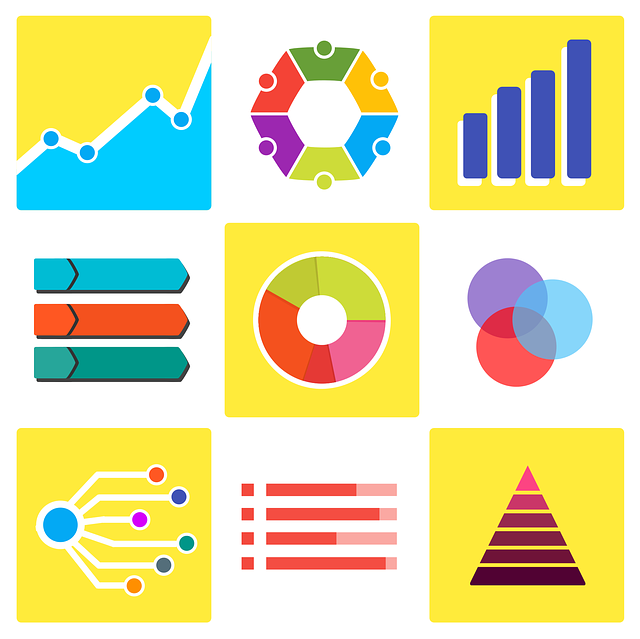We’ll increase conversions by
20-100+%
on your website.
Get a FREE Audit today
See how we can help your business increase conversion rates
Customer Journey Mapping – Ecommerce Customer Journey
Introduction: Understanding The Importance Of E-commerce Customer Journey Mapping
In the ever-evolving world of ecommerce, understanding your customers’ journey is crucial for success. A well-crafted customer journey map can provide valuable insights that shed light on how shoppers interact with your online store, guiding you towards creating a seamless and enjoyable experience that keeps them coming back for more.
In this blog post, we’ll explore the vital role ecommerce customer journey mapping plays in enhancing user satisfaction and boosting brand loyalty. Keep reading to discover how to build an effective customer journey map, optimize touchpoints, and overcome common obstacles in mapping customer takes in the multifaceted world of ecommerce interactions.
What Is E-commerce Customer Journey Mapping?
E-commerce and customer journeys and journey mapping is the process of visually representing all potential experiences a customer may have with an organization, from initial awareness to post-purchase advocacy.
Definition And Purpose
E-commerce customer journey mapping is a powerful technique that involves creating a visual representation of the entire process customers go through while interacting with an online store, from initial awareness to post-purchase experiences.
The primary purpose of this valuable tool is to help businesses better understand their customers’ behavior and needs at each stage of the buying process.
An effective e-commerce customer journey map provides valuable insights for both marketing strategies and website optimization efforts. It enables businesses to fully comprehend how customers interact with their digital commerce platform at various touchpoints, uncovering areas where improvements can be made to drive higher customer satisfaction rates and encourage repeat business.
Importance Of E-commerce Customer Journey Mapping
E-commerce customer journey mapping plays a vital role in understanding the various touchpoints and experiences that customers have with an an online retail business.
Embracing e-commerce customer journey mapping enables businesses to identify areas for improvement and optimize user experience across multiple channels. It helps in enhancing brand loyalty by ensuring that each interaction is tailored to meet unique needs and preferences while reducing friction and roadblocks encountered by customers along their purchasing journey.
Furthermore, well-crafted ecommerce customer journeys can foster strong relationships with potential buyers by proactively addressing any concerns before they become significant issues or contribute to negative feedback.
For example, analyzing Google Analytics data can reveal key moments when prospective customers abandon carts or leave pages without making purchases – allowing businesses to pinpoint problem areas effectively.

Key Stages In E-commerce Customer Journey Mapping
Understanding the key stages in e-commerce customer journey mapping is crucial for businesses looking to optimize their online store and enhance the user experience.
1. Awareness Stage: This is where potential customers first become aware of the brand or product offerings, often through browsing search engines, social media platforms, or online advertisements.
2. Consideration Stage: At this stage, prospective customers actively research different products and services offered by competing brands.
3. Purchase Stage: The point at which a prospective customer who decides to make a purchase signifies the culmination of their efforts during the consideration phase.
4.Post-Purchase Stage: After successfully completing a transaction, it is vital for businesses to follow up with proactive customer support and personalized messages tailored specifically towards each buyer’s needs/preferences—mitigating any issues encountered post-sale will significantly improve both satisfaction rates AND foster long-term brand loyalty among clientele.
5.Advocacy Stage: Happy and satisfied customers who share positive experiences within their networks can lead to increased brand recognition/reach—which ultimately drives new leads into earlier points along eCommerce Customer Journey Maps! By leveraging testimonials/social proof as well as incentive-based referral programs (among other tactics), companies can transform existing clients encourage customers into loyal advocates who’ll champion business’ success stories far & wide
How To Build An Effective E-commerce Customer Journey Map
To build an effective e-commerce customer journey map, start by identifying all customer touchpoints, analyzing customer actions and emotions, creating a customer persona, and then visualizing the overall customer journey map.
Identifying Customer Touchpoints
To build an effective ecommerce customer journey map, it’s essential to identify all the touchpoints where customers interact with your brand. Touchpoints refer to every point of contact between your customer and your business, including website visits, social media engagement, email communication, and more.
For instance, if a potential customer visits a product page on your own ecommerce platform or site but doesn’t make a purchase, that’s considered a touchpoint in the consideration stage of their journey.
Analyzing Customer Actions And Emotions
In order to build an effective ecommerce customer journey map, it’s important to analyze not only what actions customers take but also how they feel throughout each stage of their ecommerce journey.
By understanding the emotions that drive a customer’s experience and behavior, businesses can tailor their messaging and experiences accordingly. For example, if a customer is feeling overwhelmed or indecisive during the consideration stage, providing clear product information and reviews can help ease their anxieties and move them closer towards making a purchase.
On the other hand, if a customer feels frustrated or confused during the post-purchase stage, proactive customer support and easy return policies can help turn a negative experience into a positive one.

Creating A Customer Persona
Creating a good customer journey map persona is an essential step in building an effective ecommerce customer journey map. A good customer journey map persona is a representation of your ideal customer based on market research and real data about your existing customers.
By creating a detailed customer persona, you can better understand the needs and motivations of your customers at each stage of their journey. For example, if your ecommerce store sells beauty products for women aged 18-35 with sensitive skin, then you would want to create a customer persona that reflects this demographic.
With this information in hand when designing an ecommerce website or marketing campaign for their brand becomes easier because they have already identified who they are targeting specifically through what interests them most – which leads to more conversions overall!
Visualizing The Journey Map
The visual aspect of an ecommerce customer journey map is crucial because it provides a clear picture of the entire customer experience. It helps businesses to understand how their to encourage customers to navigate through various stages affect customer experiences, such as awareness and consideration, all the way to post-purchase and advocacy.
Creating a visual representation all the stages of this customer journey stages makes it easier for business owners to identify pain points or roadblocks that may lead to lost sales or unhappy customers.
By creating a clear pathway for your customer personas based on key touchpoints, you can personalize their experiences and optimize each stage for maximum engagement. For example, imagine an online clothing store with poor website navigation – potential buyers may find themselves frustrated trying to browse items easily or make purchases quickly.
Key Components Of An E-commerce Customer Journey Map
The key components of an e-commerce customer journey map include the awareness stage, consideration stage, purchase stage, post-purchase stage, and advocacy stage – understanding these stages is crucial for optimizing the customer experience.
Awareness Stage
The first stage of an ecommerce customer journey map is the Awareness Stage. This is service stage where potential customers become aware of a product or service offered by a business.
In this stage, it’s important for businesses to create brand awareness and catch the attention of their target audience through various marketing channels such as social media ads, email campaigns, content marketing, and SEO optimization.
The goal is to generate interest from customers interested in your products or services and get people interested enough to learn more about what you offer.

Consideration Stage
The consideration stage is a crucial part of the e-commerce customer journey map. At this point, prospective customers are interested in a product or service and actively seeking information to help make their purchasing decision.
They may be comparing prices, reading reviews, or looking for product demos.
One way e-commerce businesses can optimize this stage is by creating buyer personas based on data from analytics tools and user testing. By understanding their target audience’s pain points and preferences, businesses can personalize their marketing strategies and create content that speaks directly to their needs.
For example, an online retailer selling skincare products could provide detailed descriptions of ingredients and highlight how each one benefits specific skin types to differentiate themselves from competitors who only offer generic information.
Purchase Stage
The purchase stage is the moment when a customer decides to buy a product or service from an online store. At this point, the goal for businesses is to make the purchasing process as smooth and easy as possible.
This means providing customers with clear information about the product or service, including pricing, shipping options, and payment methods.
For example, one ecommerce business found that customers were abandoning their shopping carts at checkout because of unexpected shipping fees. To address this issue, they decided to offer free shipping on orders over $50 and include a notice at checkout reminding customers of this offer.
Understanding how customers behave during the purchase stage can help ecommerce businesses improve their sales strategies while also building customer loyalty.
Post-Purchase Stage
After a customer completes their purchase, the post-purchase stage begins. This is an important part of the ecommerce customer journey because it affects brand loyalty and repeat purchases.
During this stage, businesses can send follow-up emails or surveys to gather feedback and ensure customer satisfaction.
A good example of effective post-purchase stage strategy is Zappos’ proactive customer support. They offer free returns for up to 365 days along with personalized thank-you notes and unexpected gifts in each shipment, all designed to enhance the overall experience for their customers.
Advocacy Stage
The advocacy stage is the final stage of the ecommerce customer journey map. This stage of the ecommerce customer journey mapping stages begins once a customer has made their purchase and ends when they become a loyal, satisfied advocate for your brand.
Happy customers are more likely to share their positive experiences with others, which can lead to increased brand awareness and loyalty. Through effective customer retention and advocacy strategies such as rewards or incentivizing referrals, businesses can encourage existing loyal customers to promote the brand further.
By keeping in touch with customers after their purchase and going above and beyond expectations in providing proactive support, ecommerce retailers can foster strong relationships engaged customers that could result in repeat business.

Improving Customer Experience Through E-commerce Customer Journey Mapping
By identifying customer pain points, and optimizing touchpoints, ecommerce businesses can personalize customer experiences and enhance user experience with the help of an effective customer journey map.
Identifying Pain Points And Roadblocks
One important step in building an effective ecommerce customer journey map is identifying pain points and roadblocks that customers may encounter. This means analyzing the customer’s journey from their perspective, and discovering where they are facing frustration, confusion or dissatisfaction.
Pain points can include things like a lack of product information on your website, slow-loading webpages, checkout errors or complicated return policies.
For example, if a high percentage of customers abandon their shopping carts during the checkout process due to unexpected shipping costs or confusing payment options, then it is critical for businesses to identify this issue and make necessary changes through streamlining checkout processes or offering free shipping promotions.
Optimizing Touchpoints
One of the key components of an ecommerce customer journey map is optimizing touchpoints. Touchpoints refer to any point where a customer interacts with your business- be it through your website, social media platforms or even in-store.
For example, suppose you notice that customers tend to drop off at the checkout stage when purchasing from your online store. In that case, optimizing this customer touchpoint either by streamlining the checkout process or offering different payment methods could help reduce cart abandonment rates and improve overall conversions.
Personalizing Customer Experience
Personalizing the customer experience is a crucial component of ecommerce customer journey mapping. By tailoring communication and content to the unique needs and preferences of each individual customer, businesses can build stronger connections with their audience and foster greater loyalty over time.
One effective way to personalize the customer experience is by creating targeted email campaigns that speak directly to specific segments or personas within your audience.
In addition, personalization can be achieved through personalized product recommendations based on past purchase history or browsing behavior on your site. By using data analytics tools such as Google Analytics, businesses can track user behavior across multiple touchpoints and identify opportunities for more personalized interactions at every stage of the buyer or customer’s journey.

Enhancing User Experience
Enhancing user experience is an essential component of ecommerce customer journey mapping. It involves optimizing all the data touchpoints that customers interact with during their buying process and personalizing their experience to make it as smooth and enjoyable as possible.
One way to enhance user experience is by identifying pain points and roadblocks that users encounter during their journey, such as a difficult checkout process or slow load times.
Another important aspect of enhancing user experience is through personalization efforts such as using customer data to suggest relevant products or offering personalized recommendations based on past customer behavior.
Personalized experiences help create brand loyalty and retain customers, which leads to increased revenue in the long term.
Amazon’s recommendation engine is a great example of how ecommerce companies can enhance user experience through personalization efforts. The algorithm uses purchase history data from millions of customers to recommend products that are most likely to appeal to each individual shopper.
Tools And Technologies For Building E-commerce Customer Journey Maps
There are several tools and technologies available to build effective ecommerce customer journey maps, including customer journey mapping software, analytics tools and platforms, and user testing and feedback.
Customer Journey Mapping Software
One of the essential components for building an effective ecommerce customer journey map is using customer journey mapping software. This tool allows businesses to visualize all potential experiences a customer may have with their organization and identify pain points along the way.
Using such software helps companies organize complicated data points into a logical representation of each engagement customers have with their brand. It provides valuable insights on how to optimize touchpoints, personalize customer experience, and enhance user experience across all stages of the ecommerce journey.
Analytics Tools And Platforms
Analytics tools and platforms are crucial for building an effective ecommerce customer journey and map customer journeys. They help businesses gather data on customer behavior, identify patterns, and analyze trends.
By using analytics tools like Google Analytics or other analytics software, businesses can gain insights into their customers’ journeys from initial awareness to post-purchase advocacy.
For example, a serious online business owner can use Google Analytics to track website visitors’ behavior at each stage of the buying process. This information helps them understand which channels or pages attract more potential customers and how they interact with different touchpoints along the way.
Additionally, by analyzing previous purchases and feedback from existing customers, businesses can create buyer personas that reflect their target audience’s characteristics better.

User Testing And Feedback
To ensure the effectiveness of an an ecommerce platform and customer journey map, user testing and feedback are crucial elements. User testing is the process of allowing users to interact with a website or mobile application to determine its usability and functionality.
One way to conduct user testing is through a focus group or groups where potential customers test out prototypes or provide feedback on existing ones. Another option is to use A/B testing to compare two versions of a website or app, seeing which performs better based on metrics like conversion rates or time spent on pages.
By taking into account user testing and feedback, businesses can ensure that their ecommerce customer journey maps accurately reflect the experiences of real customers.
Common Obstacles In E-commerce Customer Journey Mapping And How To Overcome Them
Some common obstacles in ecommerce customer journey mapping include a lack of customer understanding, difficulty in gathering accurate data, and time and resource constraints; however, businesses can overcome these challenges by utilizing focus groups to gain insight into the customer’s perspective, leveraging analytics tools to gather comprehensive data, and prioritizing the use of resources towards creating an accurate customer journey map.
Lack Of Customer Understanding
One of the common obstacles in creating an effective ecommerce customer journey map is a lack of customer understanding. It’s essential to have a deep understanding of customers’ behavior and preferences in order to create such a full customer map, that accurately reflects their journey.
To overcome this obstacle, businesses should invest in gathering data through various tools such as analytics platforms and user testing feedback. For example, using Google Analytics data can help gain insights into user behavior on the website or online store.
Creating accurate buyer and customer personas is also crucial for developing an effective map as it helps businesses understand their target audience better. By identifying different types of consumers and mapping out their unique experiences with the brand across all stages of the purchasing process, companies are more likely to retain existing loyal customers, while attracting new ones.

Difficulty In Gathering Accurate Data
One of the common obstacles businesses face when creating an ecommerce customer journey map is gathering accurate data. It can be challenging to get an accurate understanding of your customers’ behavior and preferences, especially for online businesses that rely on digital analytics tools to gather information.
To overcome this obstacle, you can start by analyzing existing data and conducting surveys and focus groups with customers to gain insights into their decision-making process.
Gathering accurate data is crucial in building an effective ecommerce customer journey map.
Time And Resource Constraints
Building an effective ecommerce customer journey map takes time, resources, and a considerable amount of effort. However, many businesses struggle with limited resources that make it hard to conduct in-depth research or hire dedicated staff to focus on mapping out their customers’ journeys.
One solution for businesses struggling with resource constraints is to focus on gathering accurate data from existing customers before building a comprehensive ecommerce customer journey map.
Companies can use tools like Google Analytics, focus groups, and user surveys to understand their target audience better and identify key touchpoints in the buyer’s journey.
Examples Of Successful E-commerce Customer Journey Maps And Continuous Improvement
Successful e-commerce businesses understand that customer journey mapping is not a one-and-done exercise but an ongoing process of continuous improvement. One great example is Amazon, which uses data-driven insights to personalize the customer experience at every touchpoint.
Another successful example is Sephora’s Beauty Insider Program. Makeup enthusiasts can join the program for free and receive exclusive perks like early access to new products and free beauty classes.
The program rewards customers for their loyalty with points for every dollar spent that can be redeemed for discounts or special gifts.
E-commerce giant Zappos stands out as another example of continuous improvement in customer journey mapping by placing a strong emphasis on proactive communication with its customers.
This means going above and beyond typical customer service expectations by reaching out before problems arise rather than after they’ve occurred.
These examples showcase how successful e-commerce brands are leveraging the power of continuous improvement through effective customer journey mapping techniques that take into account both individual preferences/preferences as well as broader industry trends/innovations in order to stay ahead of changing market conditions while keeping satisfied repeat customers and customers happy and coming back time after time again!










